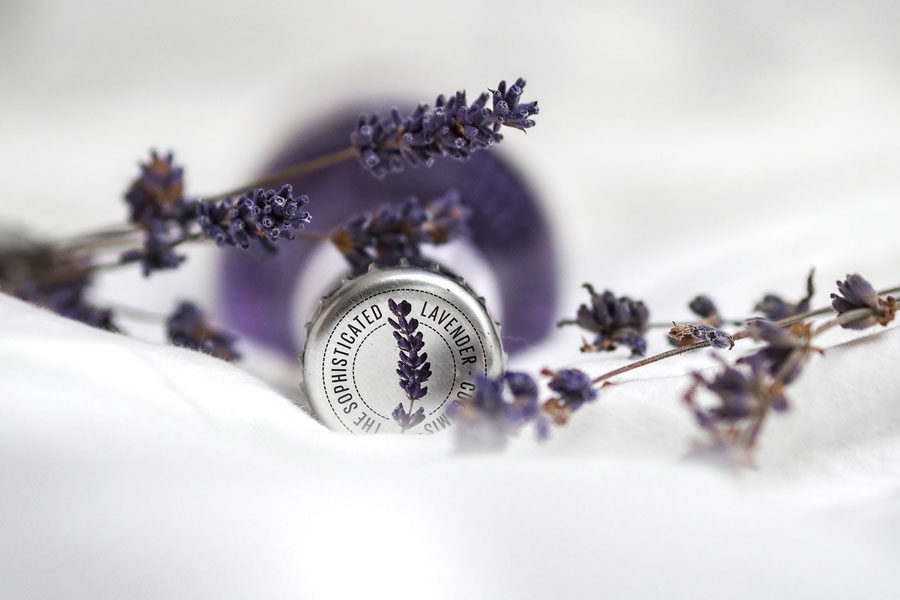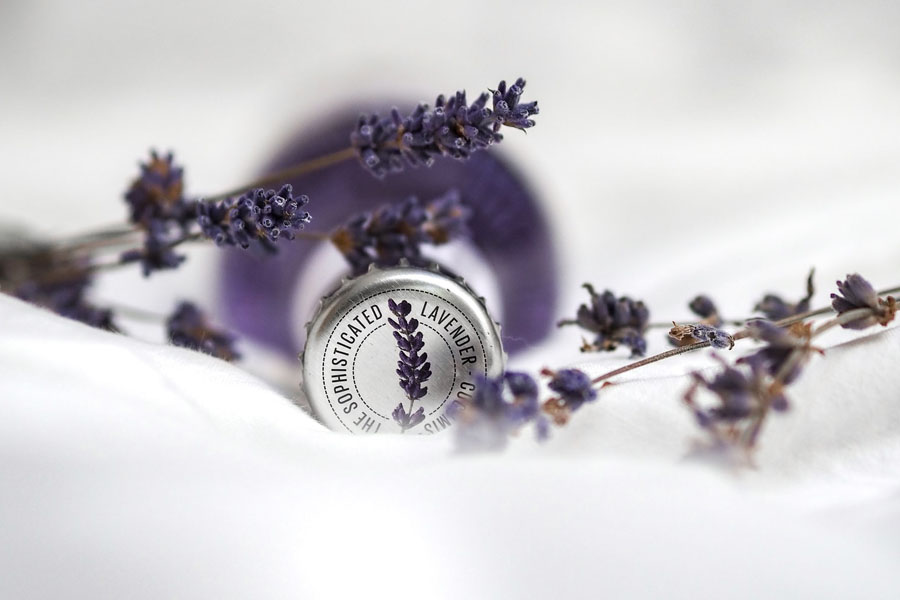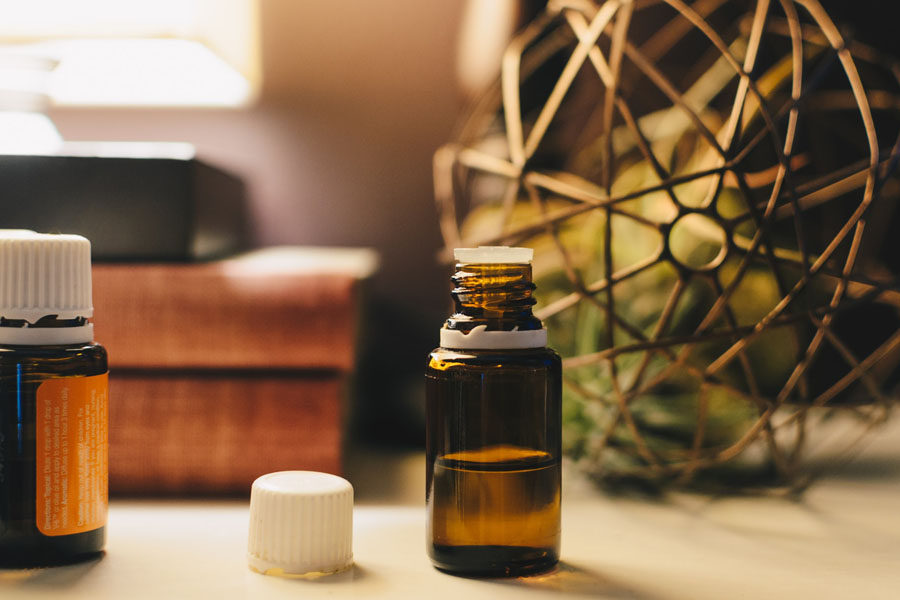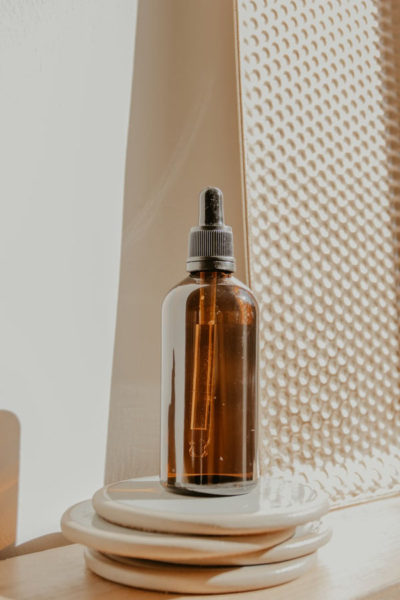
The lavender plant produces lavender oil, which is an essential oil. In fact, it has been producing the world’s most widely used essential oil for over 2500 years. Lavender comes in over 400 different varieties, each with its own distinct scent and qualities. Lavender oil is popular as a must-have oil due to its numerous applications. Despite its popularity as a soothing aroma that helps promote a calm sleep, lavender oil has a lot of uses. In this article, we’ll go over five benefits of lavender oil.
Benefits of Lavender Oil
So, here are the benefits of lavender oil that we will discuss in this article.
- Helps sleep
- Reduces anxiety
- Reduces pain and inflammation
- Stops hair loss
- Relieves pains and wounds
Let’s get to know them in detail in the next sections.
1. Helps Sleep
So, if you’re having trouble sleeping, lavender oil could be your savior, according to research. Lavender oil is very popular as a natural sleep aid and is the most commonly recommended essential oil for this purpose.
According to some studies, lavender can boost melatonin levels in the body, allowing you to get a better night’s sleep.
In a 2005 study, 31 young, healthy sleepers were evaluated to see how lavender essential oil influenced them. Participants had more slow- and deep-wave sleep after using lavender, according to the researchers. The next morning, all participants said they had “more vigor.”
Another study suggests that inhaling lavender oil several times before going to bed significantly increased the number of profound sleep times in healthy adults.
Lavender oil has anti-insomnia properties in addition to its sleep-inducing properties. When compared to a lavender oil-free control group, a study found that inhaling lavender oil for 20 minutes twice a week comforted the nervous system and enhanced sleep quality rankings for women with insomnia.
2. Reduces Anxiety
It is a common belief that lavender alleviates anxiety and promotes relaxation. Other than an effective anxiety treatment, some people seem to believe it as a depression treatment as well. After all, lavender has a calming effect that aids in the control and reduction of anxiety. It has been shown to have an impact on a variety of nerve transmission pathways.
Lavender’s anxiety-relieving properties have been studied in a variety of populations. A 2005 study suggested that inhaling the scent of lavender reduced anxiety. And it also improved mood in 200 people awaiting dental treatment.
According to integrative medicine specialist Yufang Lin, MD, lavender has the ability to,
- Calm the nervous system
- Lift the mood
- Lower blood pressure.
“Use of lavender has been linked to reduced anxiety and depression in studies.”, Dr. Lin says.
3. Reduces Pain and Inflammation
Studies have shown that lavender oil can help reduce pain and inflammation.
Researchers suggest that lavender oil is effective as an anti-inflammatory in a 2015 study. When diluted lavender oil was applied topically in one experiment, it has provided pain relief comparable to some prevailing pain relievers. This suggests that lavender could be beneficial for pain and inflammation relief.
Another study from 2012 looked at the ability of lavender essential oil to relieve pain in migraine sufferers. Inhaling the scent of lavender seems to be effective in reducing the intensity of migraine headache symptoms.
As shown in a 2013 study, lavender oil also can help children who are in pain after their tonsils are removed. Children who inhaled the lavender scent after surgery appeared to be able to reduce their daily dose of medicine.
4. Stops Hair Loss
Whereas the research is still in its early stages, one animal study depicts that applying lavender oil to the backs of mice once a day for four weeks prompted hair growth on all levels.
So, regularly massaging your scalp with a mixture of lavender oil with other herb oils may help slow hair loss. Lavender oil is also being studied to see if it can aid hair growth. In one study, mice given lavender oil developed thicker coats.
As you can see, human clinical trials are still necessary, so the verdict is still out on this one. However, this may be just the motivation you need to add a few drops of lavender to your homemade hair mask.
Apply a few drops of lavender oil to 3 tablespoons of carrier oil (we’ll talk about this in detail in the upcoming section – How to Use Lavender Oil?) and massage it into your scalp. Allow it to sit for at least 10 minutes before rinsing it off and shampooing as usual. This is something you can do several times a week.
5. Relieves Pains and Wounds
Lavender has the potential to be a potent healer. Lavender essential oil also seems to relieve soreness and redness in women who had vaginal cuts used to deliver babies, in a small study.
Another study found that inhaling lavender essence helped women suffering from C-section birth pain.
According to a 2016 study, women who did smell lavender for half an hour each day throughout the first three days of their period had less pain after two months. Other studies have linked applying lavender oil to the belly to decrease menstrual pain.
Over the course of a five-day period, lavender oil closed wounds faster than saline or iodine in an animal study. The increase of epidermal growth factor in the skin, which is required for tissue regeneration, was attributed to this phenomenon by researchers.
Researchers also suggest that lavender oil promotes skin tissue healing in another study. So, if you have a cut, a scrape, a mild burn, or any other type of wound, lavender oil can help speed up the healing process.
Simply mix three or four drops of lavender oil with a few drops of coconut to use on small wounds. Then use a cotton ball to apply the mixture to your wound. Moreover, if your wound has already healed, lavender oil can help you get rid of any remaining scars as well.
A lavender oil spray can help soothe a sunburn. Mix a quarter cup of aloe vera juice, 2 tablespoons distilled water, 10 to 12 drops of lavender oil, and jojoba oil in a spray bottle. Shake the bottle well before spraying it on your sunburn. Spray the sunburn 2 to 3 times a day until it heals.
Lavender Essential Oil by Handcraft Blends
Here’s what you’ll need if you’re looking for a good quality lavender oil to reap some of the benefits listed in the article.
Handcraft Blends guarantees that their product is 100% natural unlike the other countless oils sold on the internet that falsely make the claim. Every bottle comes with a quality guarantee because each essential oil is tested by an independent lab to ensure its efficacy. Each oil is examined for its constituents, as well as for the presence of fillers, additives, and diluting agents.
This essential oil is packaged in an amber glass bottle to protect it from UV rays and sunlight. They also include a glass dropper to ensure that you get the exact amount of oil you need without wasting any.
How to Use Lavender Oil?
There are numerous ways to use lavender oil, just as there are numerous benefits. It’s typically applied topically for skin and hair health, though the methods can vary depending on your preferences. As a result, lavender essential oil comes handy in,
- Baths
- Body lotions
- Massages
It’s best not to use too much oil—due to its high concentration, two or three drops should suffice.
1. Baths
In the bath, lavender is a better choice than cinnamon, clove, oregano, savory, spearmint, thyme (except linalool type), and wintergreen. To get the most out of your aromatherapy bath, first fill it with water. Then turn it off before adding essential oils.
Use 5 drops lavender and 4 drops chamomile to make a soothing bath (German or Roman). This soothing and relaxing combination can help you unwind and get ready for bed.
2. Body Lotion
If you’re going to use lavender essential oil on your skin, dilute it with a “carrier oil”. Carrier oil is a neutral, minimally processed oil. Also remember to use oils that you aren’t allergic to, such as:
Almond oil
Almond oil is a slightly stronger moisturizer than jojoba and grapeseed oil. It is ideal for dry, sensitive skin, including baby skin.
Argan oil
Argan oil is both gentle and moisturizing, scoring a zero on the comedogenic scale!
Coconut oil
It’s extremely hydrating and contains caprylic acid, as well as other compounds with antibacterial, antiviral, antifungal, and anti-inflammatory properties.
Jojoba oil
Jojoba oil has a chemical structure similar to our skin’s natural oils, and it is light, non-greasy, and absorbs quickly.
Olive oil
Olive oil is a bit thicker than some of the other drier oils on the list. But it is remarkably hydrating and nourishing for dry skin. It’s a great pick for a multi-use lavender oil as it’s edible.
Rosehip seed oil
Rosehip oil contains essential fatty acids, Vitamin E, and Vitamin A, all of which promote cell turnover. It’s easy to absorb and lightweight.
Add adequate essential oil to your base oil to make the mixture fall between 1% (six drops of essential oil per ounce) and 2% (12 drops of essential oil per ounce).
Then shake it and apply anywhere. The mixture is perfect as a lotion or a cream.
3. Massage
Massage a couple of drops of lavender oil into your scalp, or add two or three drops to each dollop of shampoo or conditioner you use for hair health.
Also note that while lavender oil is generally safe, it can cause irritation in some people. If you experience any negative side effects, you should stop using the oil.
Homemade Lavender Oil Recipe
It’s simple and very cost-effective to make your own lavender oil when compared to other beauty and skin care products on the market. DeanneCat in Homestead and Chill recommends a homemade lavender oil recipe as follows;
- Obtain dried lavender flowers that are 100 percent pure.
- Fill a clean glass container with dried lavender buds, about a third of the way full.
- Pour the oil of your choice over the dried lavender flowers until the container is full and/or the flowers are fully submerged.
- To improve infusion, cover the container with a lid and keep it in a sunny, warm location. A great choice is a bright windowsill! Give at least one week, and up to several weeks, for the oil and flowers to infuse. Shake and turn the jar every now and then to keep the floating flowers oil-coated.
- Strain the flowers from the oil when the time is up off. Place a fine-mesh strainer or canning funnel over a clean glass container. Cover with cheesecloth (or use a reusable nutmilk bag), and pour the oil and flowers in to drain. Squeeze the flowers in the cheesecloth sack to extract every last drop of oil!
- Add a few drops of lavender essential oil for a little extra aroma. Dilute at a safe dilution ratio of about 2%, or 12 drops of EOs per fluid ounce of carrier oil. However, since the oil is already infused with whole lavender flowers, you can use much less here according to your preference.
- Finally, keep the lavender oil in a cool, dry place. To extend the shelf life, you can also keep it in the refrigerator. To find out how long your lavender oil should last, look at the information on the bottle of carrier oil.
Benefits of Lavender Oil | Conclusion
While the lovely purple plant is pleasant to look at, lavender oil also have a variety of therapeutic properties. We hope that these five benefits of incorporating a little lavender into your daily routine will make a significant difference in your life! So why not add it to your essential oils arsenal collection as well?
Finally, if you’d like to know about other essential oils and useful oils, don’t hesitate to read our articles about sandalwood oil, rosehip oil, rosemary oil, peppermint oil, lemongrass oil, chamomile oil, orange oil, camphor oil, castor oil, argan oil, grapeseed oil, cypress oil, tea tree oil, hemp seed oil, turmeric oil, coconut oil, thyme oil, cedarwood oil, mandarin oil, clary sage oil, carrot seed oil, niaouli oil, black pepper essential oil, ginger oil, eucalyptus oil, citronella oil, rose geranium oil, patchouli oil etc.




6 comments